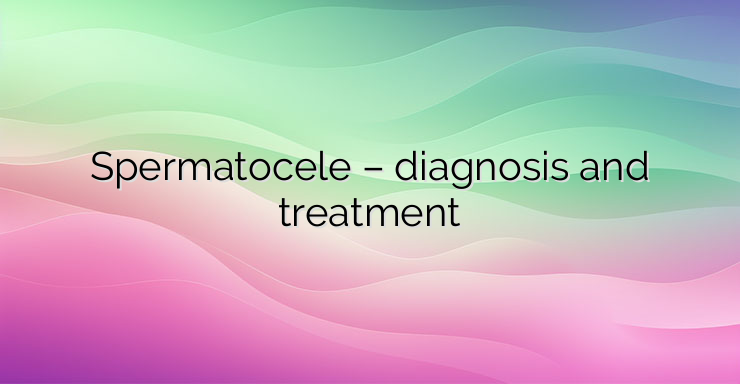A spermatocele is an extratesticular cyst that develops in the epididymis (testis), the small, coiled tube located at the top of the testicle that collects and transports sperm. A spermatocele is a benign mass that is usually painless, and the cyst is often filled with a white or clear fluid that may contain dead sperm. How can a spermatocele be diagnosed? Spermatocele can be diagnosed by a thorough examination of the genital area. The doctor palpates (palpation – a method of physical examination that relies on the doctor’s tactile sense of touching the patient’s body structures) the patient’s testicles to check for swelling or areas that are tender or painful to the touch. Some pain may be felt when the doctor touches the affected areas. It is possible to appoint an ultrasound (an imaging study using ultrasound, in which the doctor can examine the scrotal area for formations), in the presence of a spermatocele, it should be seen. What is the treatment for spermatocele? Spermatocele is not an oncological disease, usually the condition does not cause pain. Most people do not need treatment. Instead, regular check-ups are needed to monitor the state of the cyst. A spermatocele may need treatment if the growth becomes too large or starts to cause pain. Therapy is limited to oral medications to control pain and reduce swelling. No specific medication has been developed to treat or prevent the underlying disease. There are two minimally invasive therapies, but they are rarely used for spermatocele: Aspiration, a procedure in which the doctor uses a thin needle to puncture the cyst and then drain the fluid; Sclerotherapy – a procedure in which the doctor injects a sclerosing agent (sclerosant) into the cyst, which promotes healing and stops new fluid build-up.These options for treating spermatocele have been shown to be effective, but are generally not recommended. This is because there is a risk of the epididymis being damaged, leading to male fertility problems. Another common problem is that a spermatocele can recur (form again). Surgery known as spermatocelectomy is the most commonly used treatment for spermatocele. The goal of treatment is to remove the cyst from the epididymis (testicle) while preserving the healthy tissue. This surgery is done as an outpatient procedure, which means that the patient will not need to stay in the hospital for an extended period of time. The procedure can be performed under local or general anesthesia and is usually completed in less than an hour. In some cases, it may be necessary to remove part or even all of the epididymis along with the cyst.What is the prognosis for spermatocele? Most men do not suffer from any complaints with spermatocele. If pain or discomfort is experienced, spermatocelectomy should provide relief of symptoms, although there is a risk of complications that may affect the patient’s fertility. It is also possible for a spermatocele to return even after surgery. Bibliography: National Center for Biotechnology Information (NCBI). Beiko DT, et al. Percutaneous aspiration and sclerotherapy for treatment of spermatoceles National Health Service (NHS). Testicular lumps and swellings Urology Care Foundation. What are spermatoceles (spermatic cysts)?


Leave a Reply